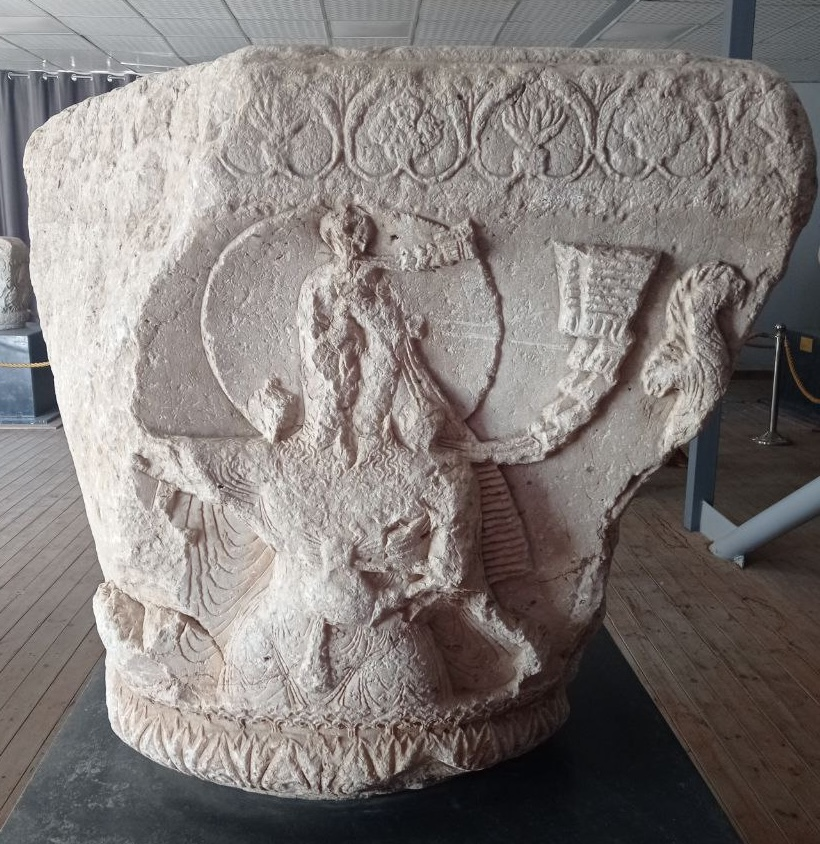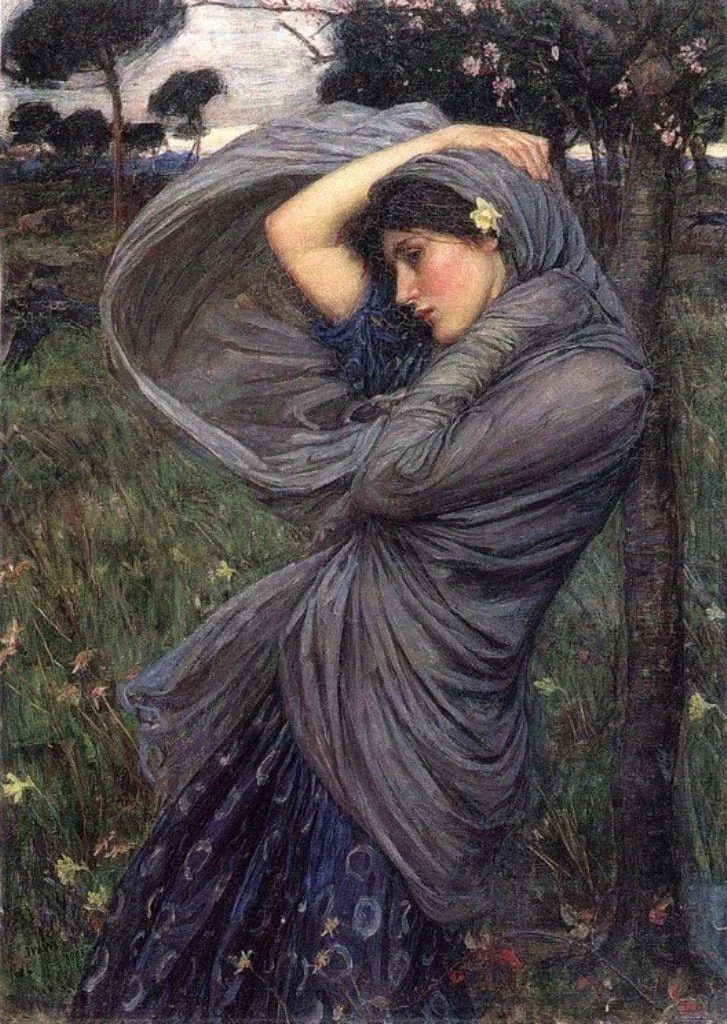
Mythology is a result of people being very good at noticing patterns in nature and very bad at distinguishing between correlation and causation. Zodiac killer.
11 subscribers
How to get URL link on X (Twitter) App


 Mithra was directly associated with lotus, to the point where on the most famous relief of Mithra, the one from Taqe Bostan, he is actually depicted standing on a lotus flower, radiating light, while witnessing Ahura Mazda giving ring of power to king Ardashir II...
Mithra was directly associated with lotus, to the point where on the most famous relief of Mithra, the one from Taqe Bostan, he is actually depicted standing on a lotus flower, radiating light, while witnessing Ahura Mazda giving ring of power to king Ardashir II... 


 This is an ancient symbol found throughout Iran, Mesopotamia, Central Asia, Levant, Crete. The reason for that is that in all these regions, year is divided into two halves:
This is an ancient symbol found throughout Iran, Mesopotamia, Central Asia, Levant, Crete. The reason for that is that in all these regions, year is divided into two halves: 

 If we interpret the animals as animal calendar markers, which they always are in compositions like this, The Dude (with big D) stands in the moment when bull (summer) ends and lion (autumn) begins (end of Jul start of Aug)...
If we interpret the animals as animal calendar markers, which they always are in compositions like this, The Dude (with big D) stands in the moment when bull (summer) ends and lion (autumn) begins (end of Jul start of Aug)...https://x.com/serbiaireland/status/1933210701138460938

 An anthropomorphised, Hellenised, version of the winged sun disc...Like this one depicted on Stele to Assurnasiripal II at Nimrud (9th c. BC)...
An anthropomorphised, Hellenised, version of the winged sun disc...Like this one depicted on Stele to Assurnasiripal II at Nimrud (9th c. BC)... 

 Maybe this has something to do with the old Celtic calendar which divided the year into two halves:
Maybe this has something to do with the old Celtic calendar which divided the year into two halves:

 The reason why we find goat flanking the tree of life in Iran, Mesopotamia, Central Asia, Levant, Crete is because in this part of the world, the climatic year is divided (roughly) into hot/dry summer (Apr/May - Oct/Nov) and cool/wet winter (Oct/Nov - Apr/May)...
The reason why we find goat flanking the tree of life in Iran, Mesopotamia, Central Asia, Levant, Crete is because in this part of the world, the climatic year is divided (roughly) into hot/dry summer (Apr/May - Oct/Nov) and cool/wet winter (Oct/Nov - Apr/May)... 




 In the recent geological past, Earth’s magnetic field reduced to ~10% of the modern values and the magnetic poles shifted away from the geographic poles, causing the Laschamps geomagnetic excursion, about 41 millennia ago...
In the recent geological past, Earth’s magnetic field reduced to ~10% of the modern values and the magnetic poles shifted away from the geographic poles, causing the Laschamps geomagnetic excursion, about 41 millennia ago...


 Is this the symbol? Christmas cake from Serbia with the sun and "the hands of god" cross. The hands of god cross by itself in the next picture. The hands of god represent 4 seasons with 3 months each, which means that the god whose hands these are is the Sun
Is this the symbol? Christmas cake from Serbia with the sun and "the hands of god" cross. The hands of god cross by itself in the next picture. The hands of god represent 4 seasons with 3 months each, which means that the god whose hands these are is the Sun 


 What about this detail? A curly swastika with each arm connected to a sun. Two of which are red and two of which are black.
What about this detail? A curly swastika with each arm connected to a sun. Two of which are red and two of which are black. 

 I wondered if he did this because Romans depicted Winter as a woman covered with a black veil...
I wondered if he did this because Romans depicted Winter as a woman covered with a black veil...https://x.com/serbiaireland/status/1852067255800205812

 Two most famous Cetuses 🙂 were so called Æthiopian (Levantine) Cetus and Trojan Cetus. This thread is about them, the two beautiful babes that were supposed to be sacrificed to them to appease them and the two heroes who strongly objected to such arrangements...
Two most famous Cetuses 🙂 were so called Æthiopian (Levantine) Cetus and Trojan Cetus. This thread is about them, the two beautiful babes that were supposed to be sacrificed to them to appease them and the two heroes who strongly objected to such arrangements...
https://twitter.com/serbiaireland/status/1839036253246763329This is part of the full object description from the museum page: "...The animals are crouched before a bundle of stylised reeds (not shown), much like the reeds carved into a door at the base of the Ziggurat of Anu..."

 Reeds were an important crop in Mesopotamia, as important as grain. Reeds were used as building material for building irrigation canal dams, houses and boats, and for making baskets, mats and furniture...Reeds were also used as animal fodder...
Reeds were an important crop in Mesopotamia, as important as grain. Reeds were used as building material for building irrigation canal dams, houses and boats, and for making baskets, mats and furniture...Reeds were also used as animal fodder... 



 2nd article about the link between Nergal and Apollo:
2nd article about the link between Nergal and Apollo:


https://twitter.com/Rainmaker1973/status/1827565315150246369Map of the distribution of bull leaping motifs found on seals and amulets, mid 3rd millennium BC to mid 2nd millennium BC. Eagle headed dudes and bull leaping dudes 🙂 From: "Myths of ancient Bactria and Margiana on its seals and amulets" scribd.com/document/47027…


https://x.com/serbiaireland/status/1824912575626203609
https://twitter.com/serbiaireland/status/1824912575626203609First, I definitely don't think that these panels depict funerary rituals, which is the most common interpretation of the scene ancientworldmagazine.com/articles/agia-…

 ...Mead said that the first sign of civilisation in an ancient culture was a femur (thighbone) that had been broken and then healed. Mead explained that in the animal kingdom, if you break your leg, you die...
...Mead said that the first sign of civilisation in an ancient culture was a femur (thighbone) that had been broken and then healed. Mead explained that in the animal kingdom, if you break your leg, you die...

 This great pic by @HoganSOG shows Croagh Patrick from the other side of the bay. Thousands of pilgrims climb Croagh Patrick every year on the last Sunday in Jul...
This great pic by @HoganSOG shows Croagh Patrick from the other side of the bay. Thousands of pilgrims climb Croagh Patrick every year on the last Sunday in Jul... 

 It was a stick with a notch cut into it for every day of the year and a cross or some other symbol for major holy days, which in Serbia are all linked to major agricultural events and major solar cycle events...
It was a stick with a notch cut into it for every day of the year and a cross or some other symbol for major holy days, which in Serbia are all linked to major agricultural events and major solar cycle events...

 The other day wanted to write an article about this custom, and while looking around the net for more info on the subject, I came across 1960 paper by Niko Kuret "BABO ŽAGAJO, Slovenske oblike pozabljenega obredja in njegove Evropske paralele" etno-muzej.si/sl/etnolog/slo…
The other day wanted to write an article about this custom, and while looking around the net for more info on the subject, I came across 1960 paper by Niko Kuret "BABO ŽAGAJO, Slovenske oblike pozabljenega obredja in njegove Evropske paralele" etno-muzej.si/sl/etnolog/slo…